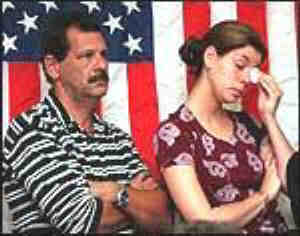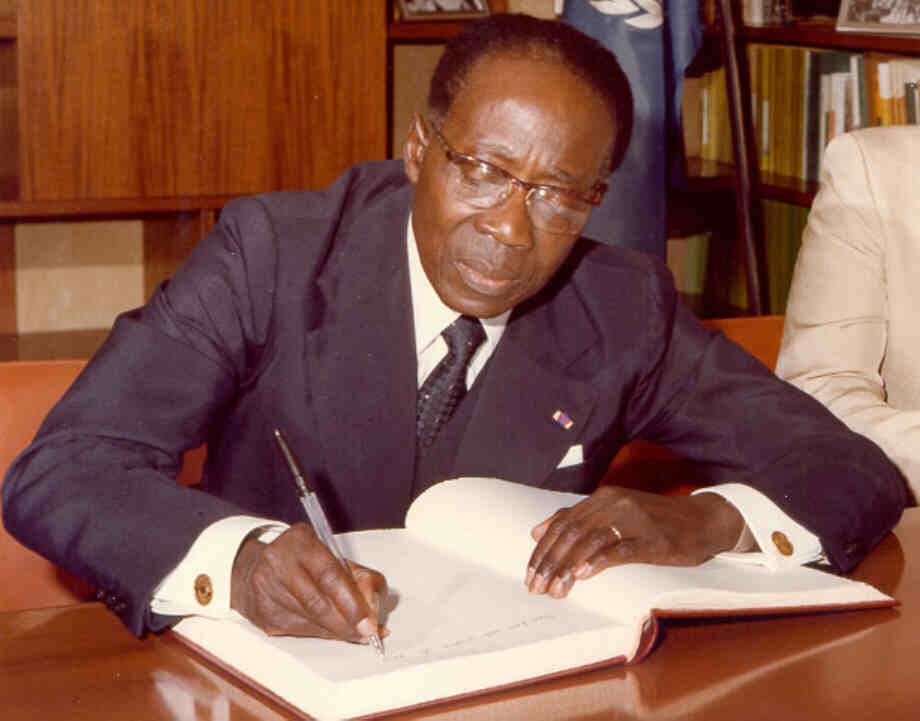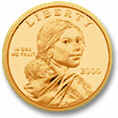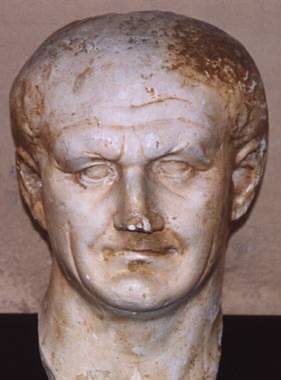1968 Treasury Secretary’s last
day on the job
Henry Fowler’s last day as the Secretary of the Treasury. A Yale Law
School grad and government servant since the mid-1930s, Folwer apprenticed
as the Under Secretary of the Treasury for three years before rising
to the department's top spot on April 1, 1965. During his tenure,
Fowler helped give birth to a new international monetary reserve system,
alternately known as "Special Drawing Rights.” President Lyndon
Johnson gave a special nod to Fowler's work on SDR, hailing the Secretary
as "...the grand architect of the most significant reforms in the
international monetary system since Bretton Woods.” Fowler also
helped establish a "two-tier" gold system, which was unveiled in 1968.
|
1967 US President promotes Vietnam
War in Australia, Thailand, Vietnam, Vatican.
President Lyndon B. Johnson attends
a memorial service for Australian Prime Minister Harold Holt in Melbourne
and then visits Vietnam, Thailand, and the Vatican. Arriving in Thailand
on December 23, Johnson visited the US air base at Korat, where he
told the US pilots there that the United States and its allies were
"defeating this aggression.” The president then visited US combat
troops in Cam Ranh, South Vietnam, and told them that the enemy "knows
that he has met his master in the field.” Next, Johnson flew
to Rome and met with Pope Paul VI for over an hour with only interpreters
present. A Vatican statement said the Pope advanced proposals toward
attaining peace in Vietnam during the meeting. |
1965 In the largest US drug bust to date, 209 pounds of
heroin are seized in Georgia.
1963 Four thousand
cross the Berlin Wall (1st time it opens to West Berliners) to visit relatives
under a 17 day Christmas accord.
1963 Berlin Wall opened for
first time
More
than two years after the Berlin Wall was constructed by East Germany
to prevent its citizens from fleeing its communist regime, nearly
4000 West Berliners are allowed to cross into East Berlin to visit
relatives, under a 17 day Christmas accord. Under an agreement reached
between East and West Berlin, over 170'000 passes were eventually
issued to West Berlin citizens, each pass allowing a one-day visit
to Communist East Berlin.
The day
is marked by moments of poignancy and propaganda. The construction
of the Berlin Wall in August 1961 separated families and friends.
Tears, laughter, and other outpourings of emotions characterized the
reunions that took place as mothers and fathers, sons and daughters
met again, if only for a short time. Cold War tensions were never
far removed from the scene, however. Loudspeakers in East Berlin greeted
visitors with the news that they were now in "the capital of the German
Democratic Republic," a political division that most West Germans
refused to accept. Each visitor was also given a brochure that explained
that the wall was built to "protect our borders against the hostile
attacks of the imperialists.” Decadent western culture, including
"Western movies" and "gangster stories," were flooding into East Germany
before the wall sealed off such dangerous trends. On the West Berlin
side, many newspapers berated the visitors, charging that they were
pawns of East German propaganda. Editorials argued that the communists
would use this shameless ploy to gain West German acceptance of a
permanent division of Germany. The visits, and the high-powered rhetoric
that surrounded them, were stark reminders that the Cold War involved
very human, often quite heated, emotions. |
1962 In its first free election in 38 years, the Dominican
Republic chooses leftist Juan Bosch Gavino as president.
1960
National Liberation Front is formed by guerrillas fighting the Diem regime
in South Vietnam.
1960 La Fundación Juan March dona,
por 10 millones de pesetas, a la Biblioteca Nacional el códice del Cantar
del Mío Cid. [otro sitio Cantar del Mío Cid -1-
-2-
-3-]
[un tercer sitio: Cantar
del Mío Cid]
1948 US Supreme Court announces
that it has no jurisdiction to hear the appeals of Japanese war criminals
sentenced by the International Military Tribunal.
1946 Ho Chi Minh calls all Vietnamese
to fight the French.
The morning after Viet Minh forces under Ho Chi Minh launched a night
revolt in the Vietnamese capital of Hanoi, French colonial troops
crack down on the communist rebels. Ho and his soldiers immediately
fled the city to regroup in the countryside. That evening, the communist
leader issued a proclamation that read: "All the Vietnamese must stand
up to fight the French colonials to save the fatherland. Those who
have rifles will use their rifles; those who have swords will use
their swords; those who have no swords will use spades, hoes, or sticks.
Everyone must endeavor to oppose the colonialists and save his country.
Even if we have to endure hardship in the resistance war, with the
determination to make sacrifices, victory will surely be ours." The
First Indochina War had begun.
Born Nguyen Tat Thanh in Hoang Tru, Vietnam, on 19 May 1890, Ho Chi
Minh left his homeland in 1911 as a cook on a French steamer, under
the name Ba. After more than 3 years as a seaman, he lived in London
and then moved to France (1917-1923), where he became a socialist
activist, under the name Nguyen Ai Quoc (Nguyen the Patriot), and
then one of the first members of the French Communist Party at its
founding in 1920.
He later traveled
to the Soviet Union, where he studied revolutionary tactics and took
an active role in the Communist International. In December 1924, he
went to China, under the name Ly Thuy, and there he set about organizing
exiled Vietnamese Communists. Expelled by China in April 1927, he
traveled extensively before returning to Vietnam in January 1941.
There, he organized a Vietnamese guerrilla organization--the Viet
Minh--to fight for Vietnamese independence. Japan occupied French
Indochina in 1940 and collaborated with French officials loyal to
France's Vichy regime. Ho, meanwhile, made contact with the Allies
and aided operations against the Japanese in South China. In early
1945, Japan ousted the French administration in Vietnam and executed
numerous French officials.
When
Japan surrendered to the Allies on 02 September 1945, Ho Chi Minh
felt emboldened enough to declare the independence of Vietnam from
France. On 06 October French general Leclerc landed in Saigon and
within three months had control of South Vietnam. Negotiations between
Ho Chi Minh and the French began in late October 1945, leading to
an agreement on 06 March 1946 for Vietnam to be a free state within
the French Union. This was unsatisfactory to extremists on both sides.
From 20 to 23 November 1946, almost
6000 Vietnamese were killed when a French cruiser fired on Haiphong
after a clash between French and Vietnamese soldiers. In response,
the Viet Minh launched an attack against the French in Hanoi in December
1946. The French quickly struck back, and Ho and his followers found
refuge in a remote area of northern Vietnam. The Viet Minh, undefeated
and widely supported by the Vietnamese people, waged an increasingly
effective guerrilla war against the French.
The conflict stretched on for eight years, with Mao Zedong's Chinese
communists supporting the Viet Minh, and the United States aiding
the French and anti-communist Vietnamese forces. On 07 May 1954, general
Giap inflicted a decisive defeat on the French at Dien Bien Phu, in
northwest Vietnam, prompting an 8-nation conference in Geneva concluding
on 21 July 1954. Vietnam was divided along the 17th parallel, with
Ho in command of North Vietnam and Emperor Bao Dai in control of South
Vietnam.
In the late July 1959,
Ho Chi Minh's party decided that North Vietnam would intervene in
support of the Viet Cong Communist guerrilla movement in the South.
On 20 December 1960, North Vietnam announced the formation of its
National Front for the Liberation of the South.
North Vietnam and the Viet Cong successfully opposed a series of ineffectual
US-backed South Vietnam regimes and beginning in 1964 withstood a
decade-long military intervention by the United States, known as the
Vietnam War in America but also called the Second Indochina War.
Ho Chi Minh died on 02 September 1969,
25 years after declaring Vietnam's independence from France and nearly
six years before his forces succeeded in reuniting North and South
Vietnam under Communist rule. Saigon, the capital of South Vietnam,
was renamed Ho Chi Minh City after it came under the control of the
communists in 1975. |
1945 Tire rationing in the US ends as World War II shortages
ease.
1944 Battle of Bastogne, Nazis surround
101st Airborne (NUTS!)
1943 Soviet forces halt a
German army trying to relieve the besieged city of Stalingrad.
1941
The Flying Tigers, American pilots in China, enter combat against the Japanese
over Kunming.
1941 Hitler orders: No retreat
in Russia!
Having
taken over the day before as commander in chief of the German army,
Adolf Hitler informs General Franz Halder that there will be no retreating
from the Russian front near Moscow. “The will to hold out must
be brought home to every unit!” Halder was also informed that
he could stay on as chief of the general army staff if he so chose,
but only with the understanding that Hitler alone was in charge of
the army's movements and strategies. Halder accepted the terms, but
it was another blow to their already tense relationship. Halder had
been at odds with the Fuhrer from the earliest days of the Nazi regime,
when he spoke disparagingly of Hitler's leadership ability and feared
that "this madman" would plunge Germany into war. Promoted to chief
of staff in September 1938, Halder began concocting an assassination
scheme shortly thereafter along with other military officers who feared
another European war over the Sudetenland crisis, when Hitler demanded
the German-speaking population of Czechoslovakia-and the territory
in which they resided-be made part of a greater Germany. Only a "peaceful"
resolution to the crisis-the forced diplomatic capitulation of Czechoslovakia-killed
the conspiracy. With Hitler's popularity among the German people growing,
and the timidity of the then-commander in chief of the army, General
Walter von Brauchitsch, Halder learned to live with the "madman" in
power. But Halder would continue to butt heads with Hitler, urging
that military strategy be left to the general staff when Hitler wanted
to impose his imperious will on the army. But as the offensive against
Moscow collapsed, an offensive which Halder had supported, and for
which he began to agonize over, given the number of German dead, Halder
could only concede to Hitler's seizing of power, if just to retain
his position on the general staff. By staying on, Halder hoped to
be able to protect the remaining German troops on the Eastern front
from the consequences of Hitler's obsession over defeating the Soviets.
But Hitler dismissed Halder during another disastrous Russian offensive,
this one against Stalingrad in 1942. |
|
 2001
As the 30-day state of siege declared the previous day in Argentina
fails to quell food riots, looting, and peaceful and violent demonstrations
protesting against austerity measures, President Fernando de la Rua resigns,
following the resignation of Economy Minister Domingo Cavallo and the
offer of resignation of the whole cabinet, rejected by de la Rua. In two
days, 20 looters have already been killed by shopkeepers defending their
stores.
2001
As the 30-day state of siege declared the previous day in Argentina
fails to quell food riots, looting, and peaceful and violent demonstrations
protesting against austerity measures, President Fernando de la Rua resigns,
following the resignation of Economy Minister Domingo Cavallo and the
offer of resignation of the whole cabinet, rejected by de la Rua. In two
days, 20 looters have already been killed by shopkeepers defending their
stores. 
 1892
Inflatable automobile tire.
1892
Inflatable automobile tire. Vitellius,
brutally murdered after been dragged through the streets of Rome by
Vespasians's supporters, who discovered him in hiding as they entered
the city.
Vitellius,
brutally murdered after been dragged through the streets of Rome by
Vespasians's supporters, who discovered him in hiding as they entered
the city.